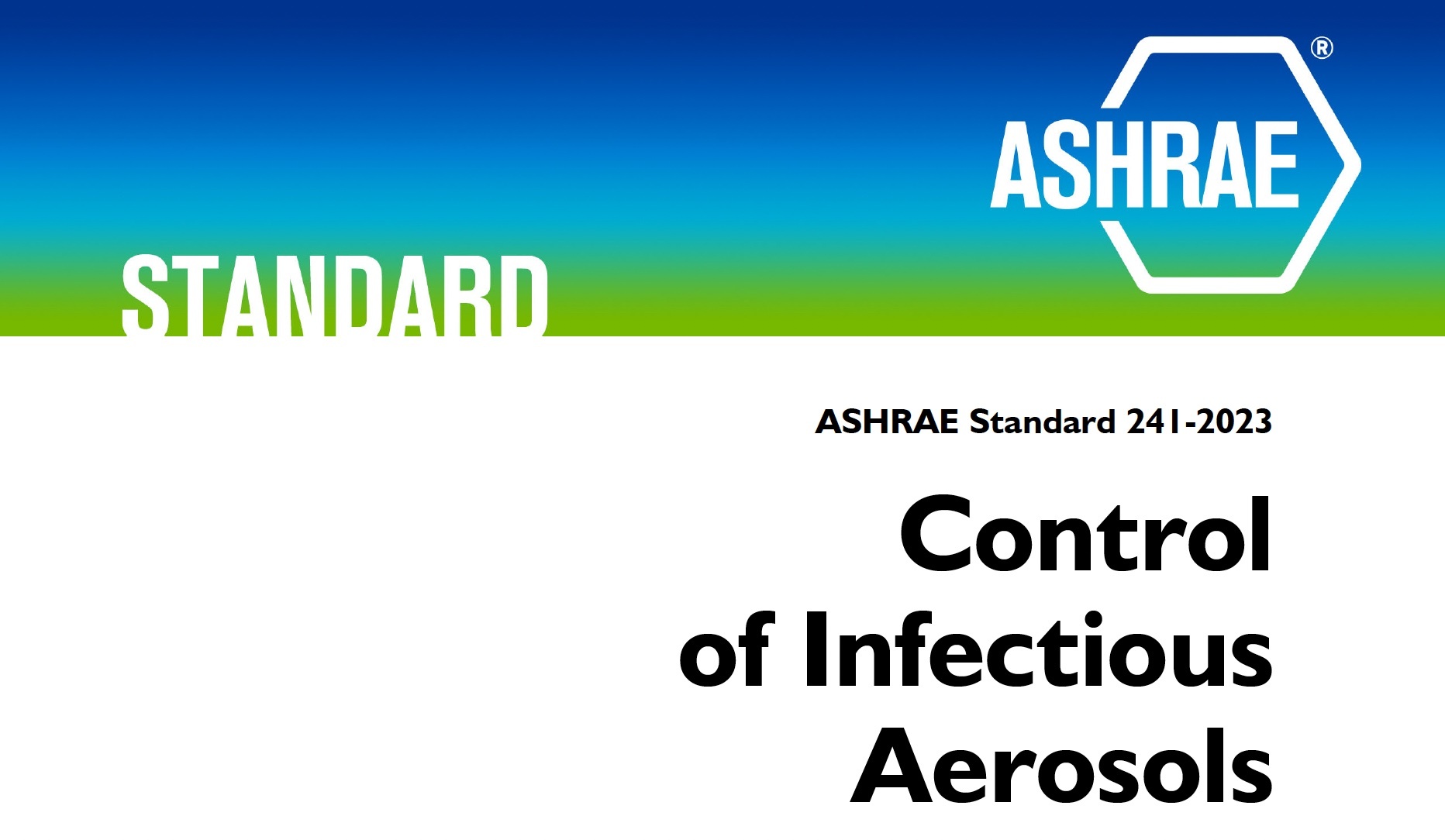ASHRAE Standard 241
Control of Infectious Aerosols
In November 2022, the White House urged ASHRAE to swiftly develop a "national pathogen control" standard. Within a few months, the roster, title, purpose, and scope of this standard were approved, leading to the formation of a project committee. Experts from various fields such as filtration, UVC technology, building design, computational fluid dynamics, and microbiology collaborated with leaders from the CDC, ASHRAE, and academia to expedite the standard's development.
The primary objective of this standard is to establish minimum requirements for controlling infectious aerosols, thereby reducing the risk of disease transmission in occupiable spaces within new and existing buildings, as well as major renovations. While the standard is currently not mandatory, there is a quicker and more widespread adoption than initially anticipated, with key organizations expressing interest.
Equivalent Clean Airflow (ECA) serves as the foundation of the standard, determining infection risk mitigation and total flow rate for spaces and systems during IRMM. The requirements for infection risk management are specified in terms of equivalent clean airflow rate per occupant (ECAi), allowing flexibility for compliance through various air sources and disinfection technologies based on extensive risk modeling and peer-reviewed literature.
At TBCO, our team is well-versed in this standard; please reach out for information or inquiries about its relevance to your needs and how we can help you improve indoor air quality through achieving the desired Equivalent Clean Airflow.
ASHRAE Standard 241

To purchase a copy of this Standard, visit ashrae.org for more information.
TBCo represents a number of products to address IAQ and application of Standard 241, including UVGI air disinfection products.
Lumalier: UVC and ASHRAE Standard 241 Application
ECAi
Requirements for infection risk management are given in terms of equivalent clean airflow rate in units of flow per occupant in a space (ECAi).
The equivalent clean airflow requirement for a space or system can be met not only by outdoor air but also by filtered recirculated air and air disinfected by various other technologies. This allows flexibility for compliance using combinations of controls that optimize factors such as cost and energy use.
ECAi requirements are based on extensive risk modeling, using inputs supported by peer-reviewed literature wherever possible. This analysis found flow rate per person to be the most useful and scalable way to represent requirements.
Meeting the Equivalent Clean Air Target
- VECAi requirement can be met by
- Outdoor airflow –mechanical/natural
- ECA from multizone air cleaning systems
- ECA from in-room air cleaning systems
- Approach allows maximum flexibility to user.
- Limitations on compliance
- Must have prerequisite minimum outdoor air.
- To receive credit toward meeting requirements, mechanical filters must be MERV-A 11 or higher (MERV 11 acceptable until 1/1/2025) or equivalent.
How can UVC be applied to disinfect air in a building?
In order to achieve the desired Equivalent Clean Airflow (ECA) for clients, Lumalier spaces out in-duct UVC lamps at appropriate distances in order to deliver the necessary intensity required for ECA. This is possible even when air is moving at high rates of speed through the air handler.
ACH and ACHe
ACH is the number of times per hour that the total air volume in a room is or space is completely removed and replaced in an hour, while ACHe is the equivalent air changes rate - calculated by adding all air cleaning and ventilation strategies.
- UVC in conjunction with proper calculations can equate to ACHe for increased indoor air quality (IAQ).
What information is needed for effective calculations?
When looking at in-duct UVC systems, there are a number of factors that need to be considered. The following is a list of the parameters Lumalier lists as needed for design for in-duct UVC using the 241 standard.
- Space Type from Standard 241
- Target ECAi from Standard 241
- Area
- Average Ceiling Height
- Volume
- Total Supply Air
- Total Outdoor Air
- Occupancy - Design (Pz)
- Occupancy - IRMM Target (Pz,IRMM)
- VECAi,t, Des Airflow Target - Design Occupancy
- VECAi,t,IRMM Airflow Target - IRMM Target Occ.
- Central AHU Filter MERV Rating
- Method for Rating Filter
- Filter Pathogen Removal Efficiency
- UV in HVAC - Single Pass Inactivation %
Please contact your local TBCo branch with questions or for more information about UVC applications.
Please watch for updates to this article including additional product and technology features.
Note: The information in this article is subject to change and should not be relied upon solely when making decisions regarding application of Standard 241. Please contact TBCo to discuss your specific project and application, and our engineers will work with you to determine the appropriate solutions.
Resource article publication date: Feb. 2, 2024


